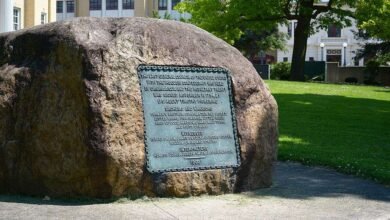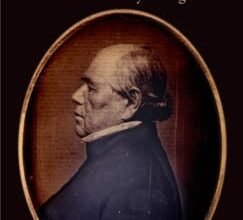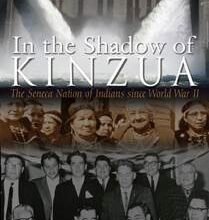King George’s War and the Thirty-Year Peace


 King George’s War and the Thirty-Year Peace:continues the contest for North America from the end of Queen Anne’s War in 1713, marking the beginning of the Thirty-Year Peace, through the start of King George’s War in 1744, to its conclusion with the signing of Treaty of Aix-la-Chapelle four years later.
King George’s War and the Thirty-Year Peace:continues the contest for North America from the end of Queen Anne’s War in 1713, marking the beginning of the Thirty-Year Peace, through the start of King George’s War in 1744, to its conclusion with the signing of Treaty of Aix-la-Chapelle four years later.
While there would be little fighting between the French, Spanish, and British colonies in North America during the Thirty-Year Peace — the Franco-Spanish conflict of 1719 being an exception — for the French and British it did not prove to be peaceful.
During the Thirty-Year Peace conflicts with former Indigenous allies erupted, including with the Three Years War, the Yamassee War in South Carolina (1715 to 1717), and the Natchez and Chickasaw Wars (1716-1743, against the French).
The Three Years War (1722–1725) – known also by various names, including Dummer’s War, Father Rale’s War, the Wabanaki-New England War, or the Fourth Anglo-Abenaki War – was a series of battles between the New England Colonies and the Wabanaki Confederacy (specifically the Mi’kmaq, Maliseet, Penobscot, and Abenaki), allied with New France.
The eastern theater of the of the Three Years’ War was mostly along the border between New England and Acadia in Maine, and in Nova Scotia.

 The western theater, where the conflict is known as referred to as “Grey Lock’s War” was in Massachusetts and what is now Vermont.
The western theater, where the conflict is known as referred to as “Grey Lock’s War” was in Massachusetts and what is now Vermont.
It included Brattleboro, Hatfield, Westfield, Deerfield and included at least a few Mohawk warriors. Some raids were organized at Fort Saint Fredric at Crown Point on Lake Champlain.
As a result of the frequent raiding on the northern frontier, Massachusetts Governor William Shirley ordered the construction of a chain of frontier outposts stretching west to its border with New York.
In the south the peace was ruptured by the opening of the War of Jenkin’s Ear in 1739, which led to an attempt by South Carolina and the new colony of Georgia to seize Spanish St. Augustine, and a counter-attack by St. Augustine and Cuba aimed at the destruction of the two British colonies.
While this Anglo-Spanish conflict would shift farther south into the Caribbean, to the north, news of another war between France and Britain would arrive in 1744.
King George’s War (1744-1732), the North American component of Europe’s War of Austrian Succession, would start in Nova Scotia with French attacks on the weakly held British colony.
This provocation inspired a response in the form of one of the boldest expeditions of the colonial period — Shirley’s successful campaign against Louisbourg on Cape Breton Island.
With the French fortress in British hands and the cry of delenda est Canada (Canada must be destroyed) echoing through the American colonial assemblies, Shirley turned to the conquest of French Canada and convinced London to dispatch a fleet to assist in the capture of Montreal and Quebec.
In Paris, news of Louisbourg’s surrender elicited an unexpected reaction in the form of one of the largest French naval expeditions ever sent to North America, with explicit orders to retake Cape Breton and expel the British from Nova Scotia.
Thus, by the summer of 1746, both British and French sentries scanned the eastern horizon daily for a fleet that would determine the destiny of the conflict, but neither would be happy with what they found.
On November 28, 1745, the French with their Indian allies raided and destroyed Saratoga in what is now known as the First Battle of Saratoga, killing or capturing more than one hundred of its inhabitants. After this and several other attacks on the Saratoga area, the British abandoned their settlements north of Albany.
In July 1746 an Iroquois and inter-colonial force assembled near Oswego for a retaliatory attack against British forces. When the expected British regulars never arrived, the attack was called off.
A large (over 1,000 men) French and First Nations force mustered to raid in the upper Hudson River valley in 1746 instead raided in the Hoosac River valley, including an attack on Fort Massachusetts (now North Adams, Massachusetts).
Other raids included the 1747 French and Mi’kmaq raid on Grand Pré, Nova Scotia; and a raid in 1748 by Indian allies of the French against Schenectady.
The final volume in Michael G. Laramie’s acclaimed histories of the European struggle for North America that set the stage for the French and Indian War (1754-1763), King George’s War and the Thirty-Year Peace, takes the reader along with the combatants into the field and waterways, including Native American, French, Spanish, Provincial, and British.
Based on a rich variety of primary sources and fully illustrated with original maps, this volume joins the author’s King William’s War and Queen Anne’s War as the modern history of these lesser-known — but enormously important — conflicts that shaped the political story of North America.
Book Purchases made through this Amazon link support the New York Almanack’s mission to report new publications relevant to New York State.
See more new books HERE.
Photo: Monument of Chief Grey Lock in Battery Park (Burlington, Vermont).
Source link




